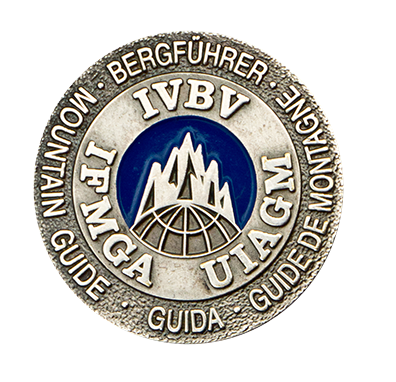Rock Exam Training
South Las Vegas. One rented house. Twelve guides. Cams and packs fill in the garage. Guidebooks and xerox copies cover the kitchen table. The air is thick with beta. “Don’t do anything on the Black Velvet wall. Too straightforward and too many bolts to be on the exam.”
“How’d you avoid that jammed block rap on the Frigid Air?”
We’ve been training for two weeks and have another week to go. Each day we venture out to climb exam routes—those with complicated guiding problems—where safely protecting two clients involves an extra four steps compared to climbing with your buddies. Take the notorious Community Pillar descent, where just getting to the main raps involves short roping, short-pitching, intermediate anchors, a pre-rig rappel and avoiding a tempting ponderosa known as No Pass Tree. No Pass Tree has is a big tree, wrapped with trucker slings, but surrounded by loose blocks. If you rap off No Pass Tree then you No Pass Exam.
The focus of guiding and our training for the American Mountain Guide Association exam is safety. Climbing the 5.10+ standard while wearing a pack and pulling two ropes seems insignificant compared to learning hundreds of safety tricks. For example, yesterday we realized that if you clove-off your client to the master point between the autolocker and their knot, then they are basically off belay for a split second—the autolocker won’t catch as you are tying the client’s clove hitch. Instead, tie off the rope’s brake strand before clove hitching the client into the anchor master point. Anal, but if guiding is your career, then it helps to stack the odds in your favor.
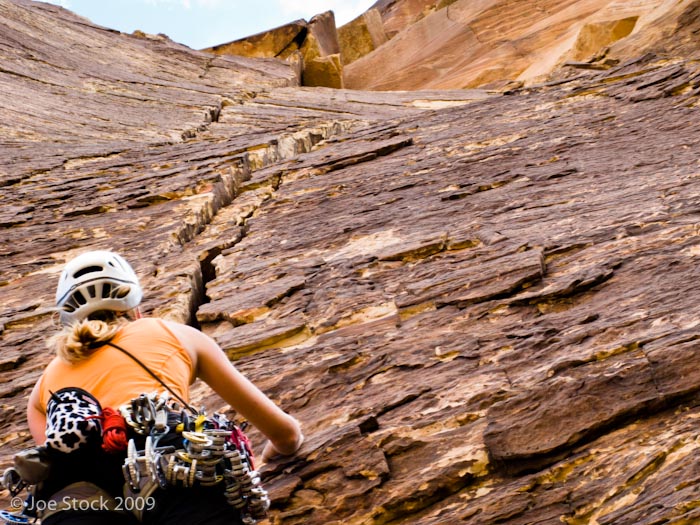
Liz Smart on Triassic Sands (5.10c, 6 pitches).
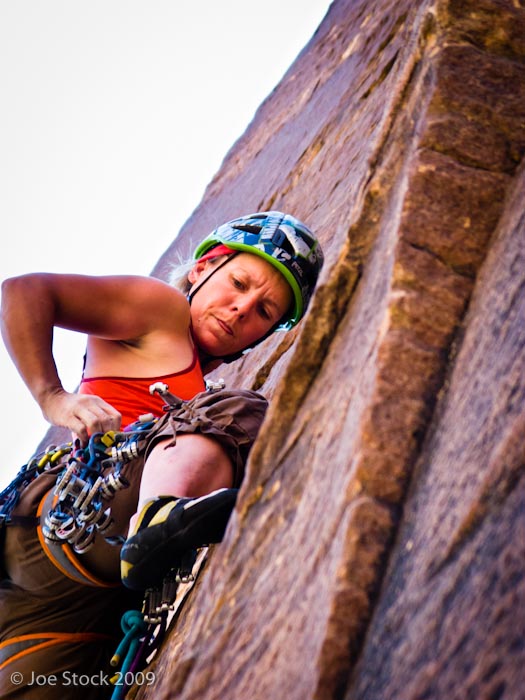
Caroline George attempting marginal gear on the 30-foot 5.10c runnout on Risky Business.
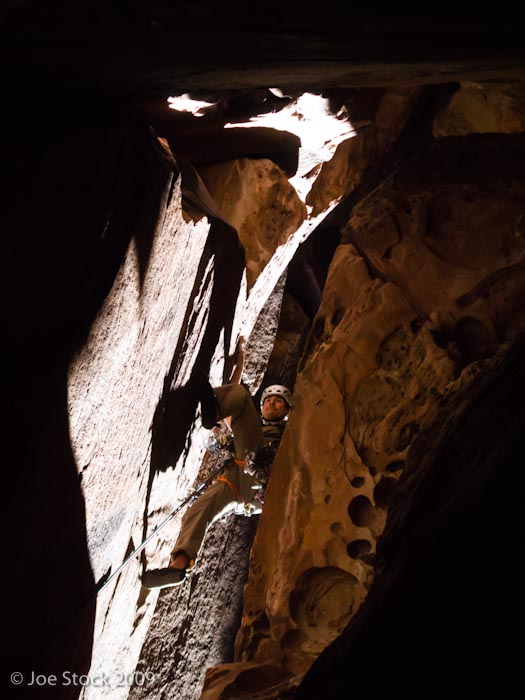
Mike Bromberg pulling two fat ropes up Community Pillar (5.9) for Chris Simmons and I.
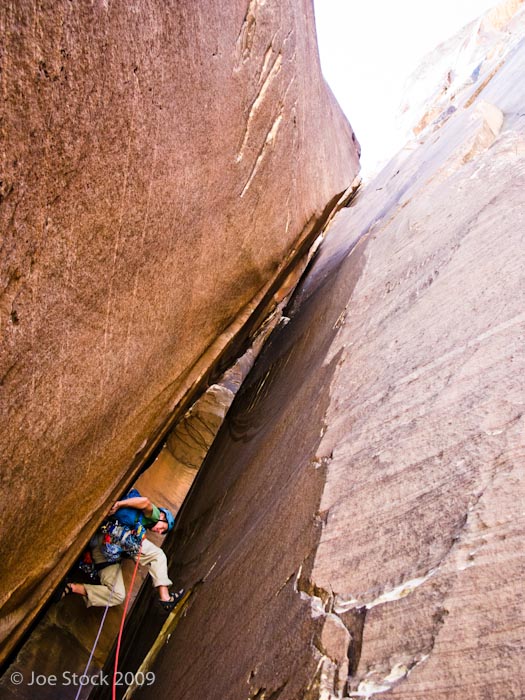
Mark Smiley in the 5.9 chimneys on the 15-pitch Epinephrine.

Mark Allen on pitch 5 of 12 on Intiwantana (5.10c), Aeolian Wall.
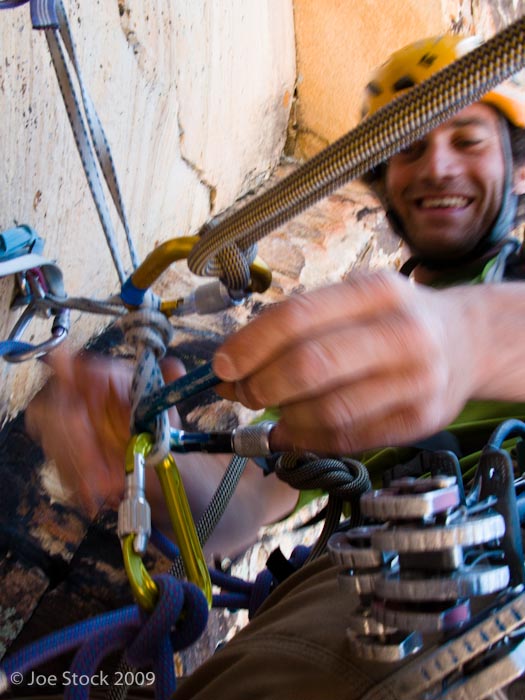
Mark Allen at an Intiwantana belay.
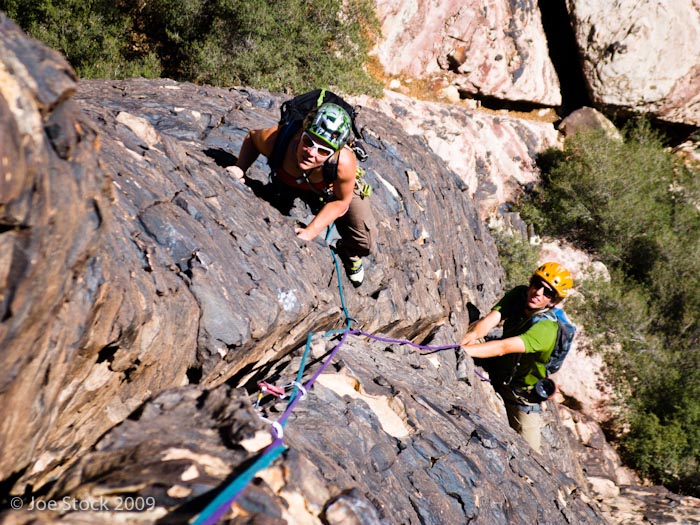
Caroline George and Jonathan Spitzer on The Walker Spur (5.10c) in 105-degree heat. The Mescalito descent from The Walker Spur has complex route finding with many transitions between short roping, short pitching and hidden rappels. This makes Mescalito a common exam route.
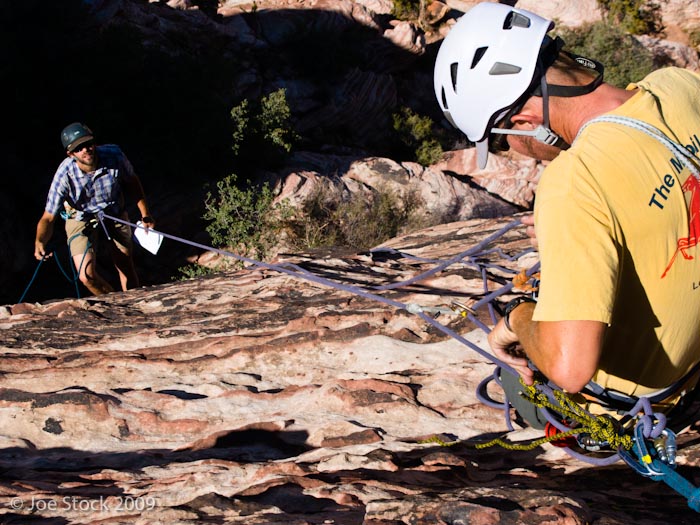
Chris Simmons and Seth Hobby running through the 45-minute rock rescue scenario (belay escape, 3:1 raise, 5:1 raise, rap, ascend, counterbalance rap and tandem rap). They took their rock guide course in 2005, before the rock aspirant exam initiated, which includes rock rescue, so their rock guide exam included the rescue scenario.
